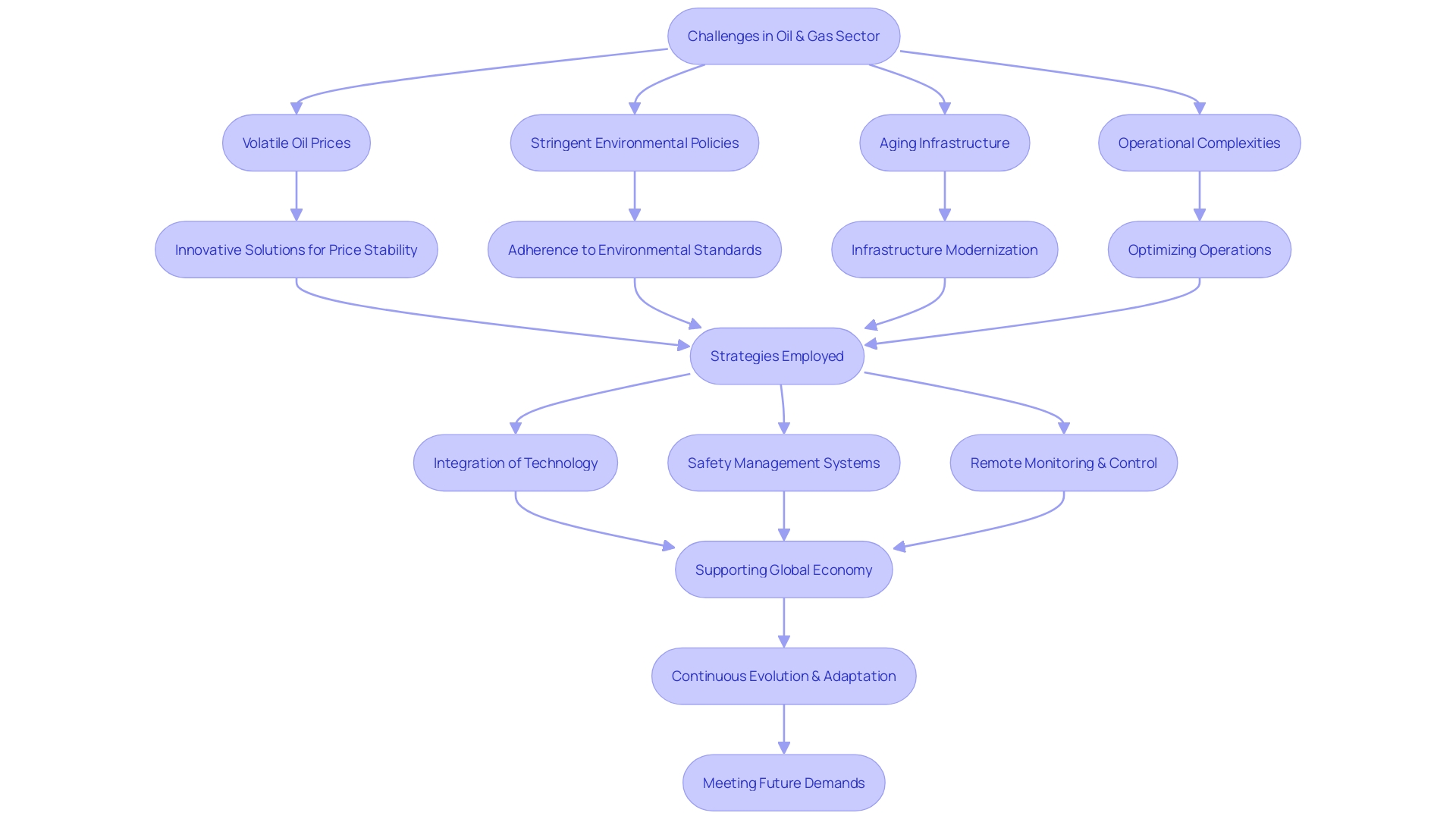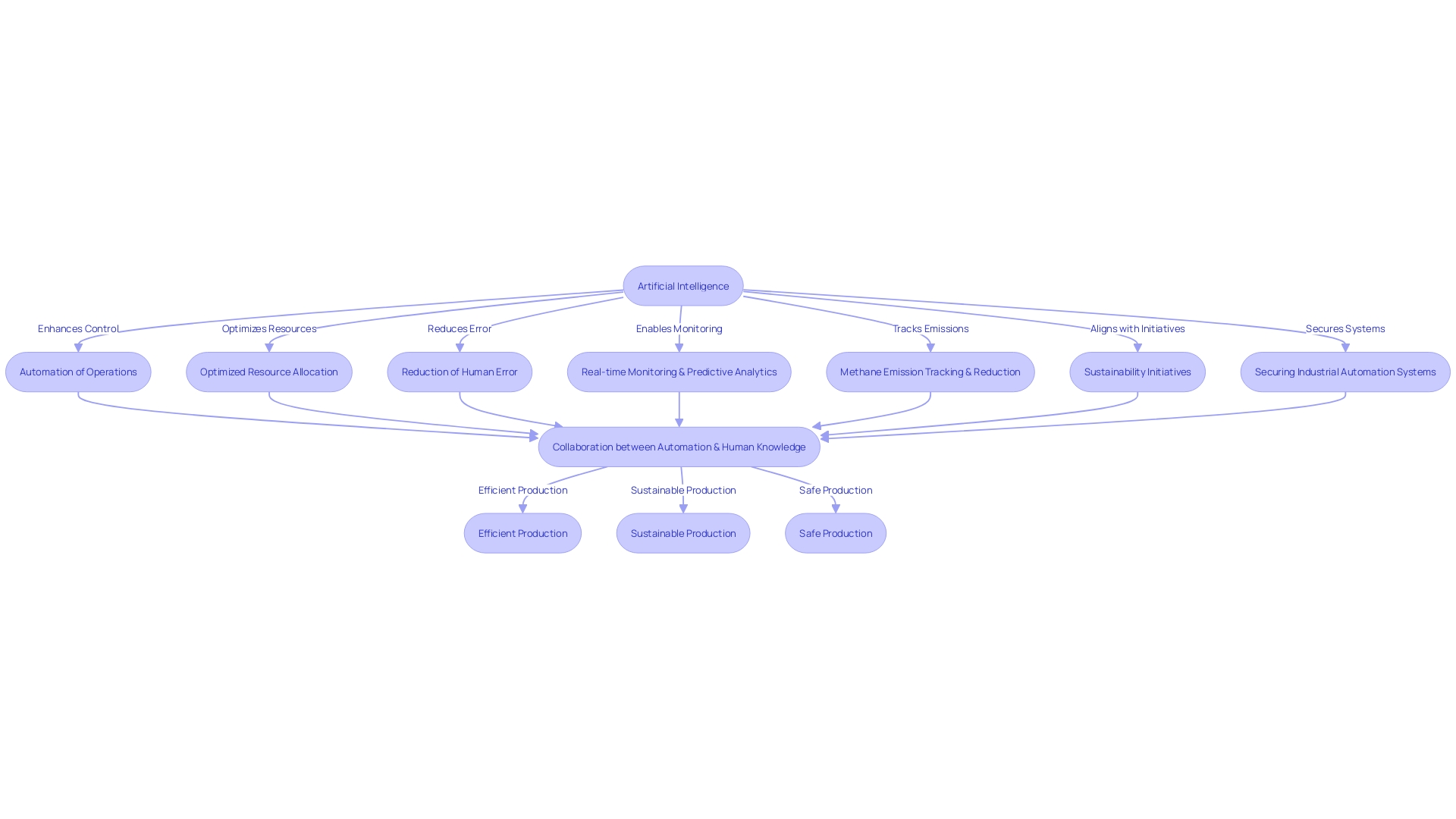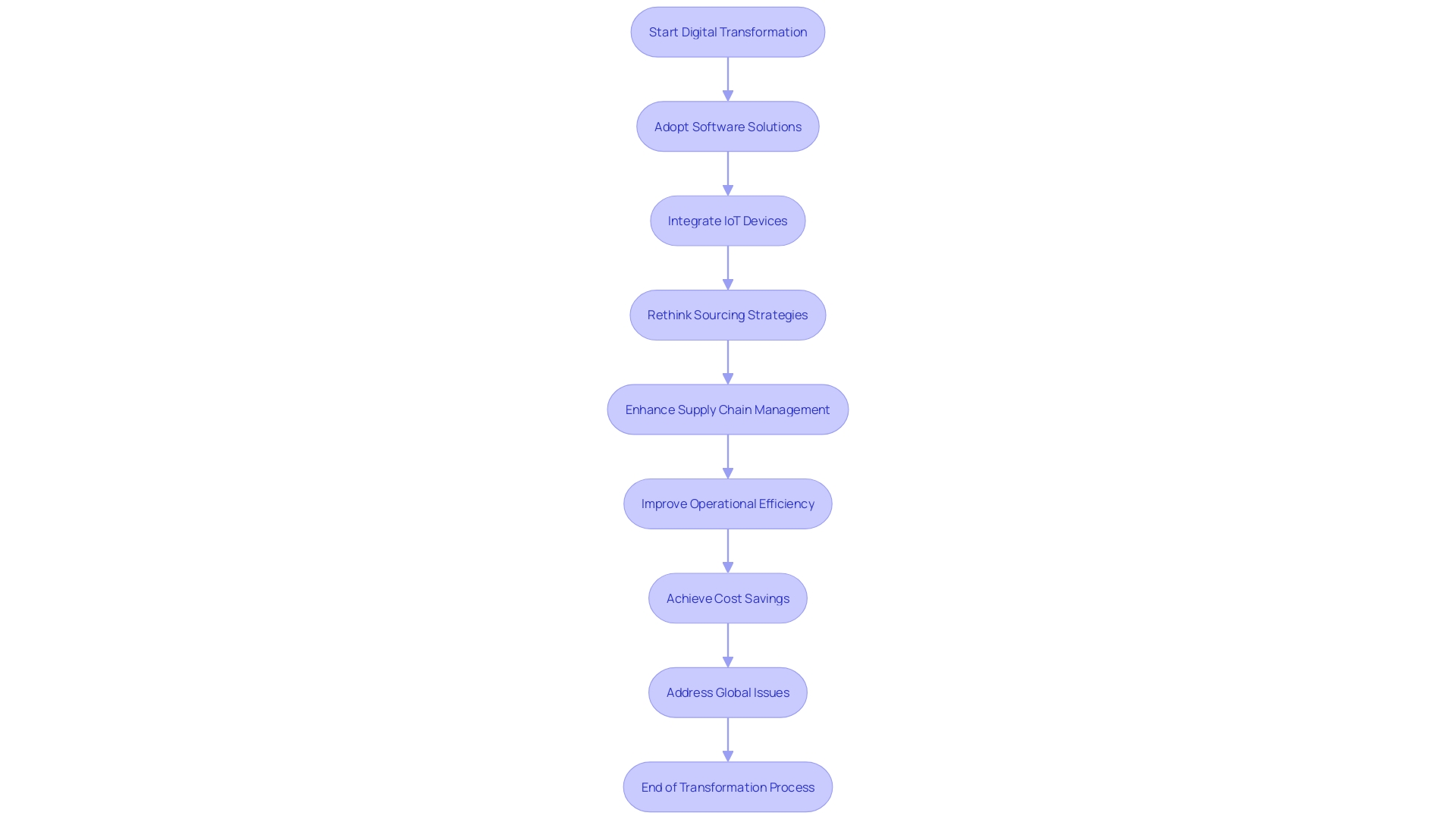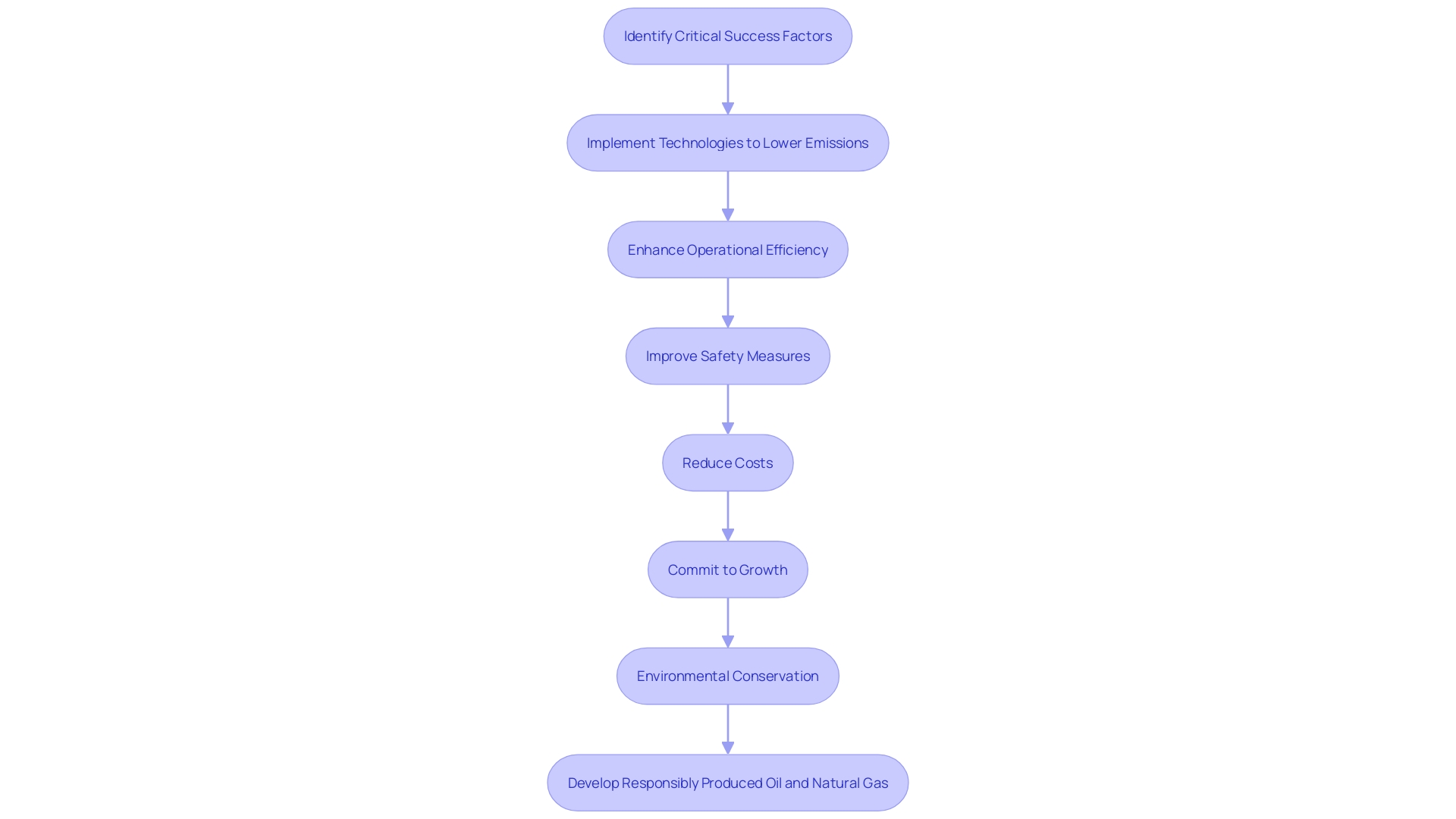Introduction
Engineering services in the oil and gas sector play a crucial role in designing, constructing, and maintaining the infrastructure necessary for oil and gas operations. These services apply scientific principles and innovative technologies to optimize processes and ensure safety and efficiency. By breaking down complex activities into individual components, engineers ensure that each step is performed correctly, enhancing overall industry performance.
This approach is not limited to oil and gas but is also used in other high-stakes industries like nuclear power. Collaborative initiatives between industry leaders aim to push the boundaries of efficiency and sustainability while exploring renewable energy and carbon capture technologies. As the global demand for sustainable energy sources increases, technologies like advanced geothermal systems offer promising alternatives.
The oil and gas industry's commitment to integrating these emergent technologies reflects its role as a cornerstone of our energy framework, with far-reaching implications for production, economic growth, technological development, and geopolitical dynamics.
Understanding Oil and Gas Engineering Services
Engineering services in the oil and gas sector play an indispensable role by applying scientific principles and innovative technologies to design, construct, and maintain the infrastructure for the full lifecycle of oil and gas operations—from exploration and extraction to refining and distribution. The strategic emphasis on what must go right in operations, rather than the myriad ways they could fail, is key to optimizing these processes. By breaking down intricate tasks into their separate elements, engineers can guarantee the accurate execution of each stage, improving the overall safety and effectiveness of the sector. This approach is not only pivotal in oil and gas; it's used in other high-stakes industries, such as nuclear power, to bolster safety and resilience against natural disasters.
Recent collaborative initiatives, like the partnership between TGS and Petrobras, underscore the sector's dedication to innovation. These collaborative endeavors strive to expand the limits of efficiency and sustainability in oil and gas exploration and production, while also investigating renewable resources and carbon capture technologies. Such partnerships are crucial as they promote the growth of state-of-the-art solutions and scientific advancements that can redefine our comprehension of power sources. Moreover, with the increasing global demand for sustainable power sources, technologies such as advanced geothermal systems present promising alternatives, capable of harnessing the Earth's ample heat resources, potentially in any location on the globe. The commitment of the oil and gas sector to integrating these emergent technologies reflects its role as a cornerstone of our energy framework, with profound implications for power generation, economic growth, technological development, and geopolitical dynamics.

Challenges in Oil and Gas Operations
The oil and gas sector, essential for global energy supply, is maneuvering through a landscape characterized by various internal and external pressures. Volatile oil prices, stringent environmental policies, aging infrastructure, and operational complexities pose significant challenges to the efficiency and productivity of the sector. To confront these challenges, oil and gas engineering services are crucial, employing innovative solutions and strategies to optimize operations and bolster performance.
The Success Path Method, designed to improve safety in high-stakes sectors, showcases the creative approaches being implemented. This method shifts the focus from what could go wrong to what must go right, breaking down intricate processes into their essential components. For the oil and gas sector, this translates into dissecting complex engineering operations to ensure successful execution, integrating these insights into overarching safety management systems, and fostering a culture where every individual comprehends their role in maintaining operational integrity.
Furthermore, the sector is utilizing progress in technology to enable remote monitoring and control, facilitating effective management of operations, even in the most isolated areas. This digital transformation allows for the real-time collection and analysis of seismic data, monitoring of pump operations, and oversight of global workforce activities, thus driving a more dynamic exchange of information and control.
The significance of this sector is emphasized by the reality that it supports the operation of the worldwide economy, impacting geopolitical dynamics to the point of provoking international conflict over energy assets. A proof of the sector's importance comes from professionals in the field who take pride in managing oil and gas properties across the nation, contributing to the management of assets that are at the heart of global contention.
Current trends and future projections indicate that the sector's relevance will persist. A survey of oil and gas executives reveals that 53% anticipate global oil consumption in 2050 to be higher than current levels, while 33% foresee a decrease. This expectation of sustained or increased demand underscores the necessity for the sector to continuously evolve and adapt, seeking methods to streamline operations while adhering to environmental and safety standards.
As the sector commemorates important milestones, such as the 50th anniversary of Ipieca, which serves as a bridge between the United Nations Environment Program and the oil and gas sector, it also embraces a future where eco-design principles prioritize waste elimination, material circulation, and efficiency enhancements. With a proactive approach to managing water resources and other environmental aspects, the sector is poised to navigate the complex landscape with resilience and innovation.

Leveraging Technology for Operational Efficiency
In the dynamic world of oil and gas, technological innovation has become a cornerstone of operational excellence. Advanced digital solutions, such as those pioneered by TotalEnergies Digital Factory, are transforming the field by providing over 80 customized applications, improving the strategic shift and digital transformation of operations in more than 25 countries. As the oil and gas sector wrestles with the dual challenges of price volatility and stringent safety requirements, companies like Baker Hughes are utilizing cutting-edge technologies to propel the field towards a safer, cleaner, and more efficient future. For instance, the integration of Bluebeam software within oil and gas workflows is demonstrating tangible benefits in efficiency and risk reduction. Moreover, the adoption of Postman by developers at TotalEnergies Digital Factory showcases the seamless collaboration that is essential for the modernization of legacy systems. The strategic implementation of automation, AI, and IoT is no longer a futuristic vision but a current reality, driving operations towards unprecedented levels of efficiency and safety. The sector's shift to digital is also apparent in the use of advanced simulation software for power grid modeling and the implementation of digital twin models to ensure the mechanical integrity of aging infrastructure. These technological advancements are not only optimizing current processes but are also instrumental in forecasting and preventing equipment failures, thereby minimizing downtime. The oil and gas sector's transition from traditional, labor-intensive methods to a more globalized, interconnected, and technologically advanced field is well underway, promising a future where energy is produced and managed with precision and foresight.

Benefits of Automation in Oil and Gas Engineering
The incorporation of artificial intelligence and automation within the oil and gas sector has brought about a new age of efficiency and precision. Advanced automation systems are pivotal in granting companies enhanced control over their operations, allowing for optimized allocation of resources and significant reductions in human error. The advent of real-time monitoring and predictive analytics, such as those employed by Baker Hughes to anticipate equipment failures in 65% of wells in the Permian Basin, exemplifies the far-reaching benefits of these technologies. These innovations are not just about improving operations but also about addressing environmental concerns, with methane emission tracking and reduction becoming increasingly critical. Given the potent greenhouse effects of methane, the industry is shifting its focus to this area, leveraging digital technologies for monitoring and risk assessment. This shift to a more technology-oriented approach aligns with worldwide efficiency initiatives, such as the United Nations' Sustainable Development Goal 7, which encourages the utilization of sustainable and contemporary power sources. Moreover, the standards set by the International Society of Automation, such as the ISA/IEC 62443, emphasize the importance of securing industrial automation systems, highlighting the need for a skilled workforce well-versed in these technologies. As we advance, the seamless collaboration between automation technologies and human knowledge will be crucial in promoting production that is not only efficient and sustainable but also safe.

Data Management and Analytics for Enhanced Performance
In the oil and gas industry, the proliferation of data from sensors, production machinery, and supply chain processes necessitates robust data management and advanced analytics. Companies like EDF have recognized this need and opened their data portals, which share essential performance indicators in formats accessible to stakeholders and the public. Such transparency fosters a deeper understanding of operations and environmental impacts.
Furthermore, the U.S. power grid serves as a prime example of how simulation software and digital twin models, fueled by enhanced computational capabilities, are crucial for integrating new resources and ensuring infrastructural integrity. These tools enable engineers to project and simulate the performance of equipment under various physical conditions, facilitating proactive maintenance and upgrades.
IoT technologies further augment these capabilities by connecting equipment and enabling real-time data collection and sharing. The licensing of TGS' Imaging AnyWare software by Shell underscores the field's move towards seamless, user-friendly software solutions that enhance data analysis and management.
As the sector navigates the post-pandemic world, the challenges of transitioning to renewable energy, economic pressures, and supply chain complexities underscore the importance of agile and resilient operational models. Access to well-organized and easily retrievable data is paramount in maintaining productivity and making informed decisions, as highlighted in the pages of Inspectioneering Journal.
The analogy of data as the 'new oil' captures its centrality to the digital revolution, driving advances in fields like AI and predictive analytics. However, unlike oil, which requires refinement, data's utility hinges on its organization and analysis, underscoring its role as a critical asset in the digital age.
Optimizing the Supply Chain through Technology
As the oil and gas sector navigates the challenges of the Fourth Industrial Revolution, companies are increasingly leveraging digital technologies to transform their operations. The strategic application of these technologies is revolutionizing supply chain management, enhancing the efficiency of logistics, and reducing delays. By embracing cutting-edge software solutions, players can now enhance inventory management, monitor shipments in real-time, and foster better coordination across various stakeholders. This digital shift promises significant cost savings and a boost in operational efficiency.
In line with this transformation, companies such as ExxonMobil are digitizing traditionally manual processes such as refractory inspections. These critical inspections, which were once paper-based and labor-intensive, are now streamlined, reducing the likelihood of human error and the associated financial risks of downtime.
Moreover, the integration of the Internet of Things (IoT) into oil and gas operations provides unprecedented connectivity and data sharing capabilities, even in remote locations. Operators can now monitor pump operations, gather seismic data, and keep track of employees globally, which enhances both control and information flow.
The practical impacts of these digital solutions are evident. For instance, Bluebeam software has been instrumental in reducing time spent on oil and gas engineering workflows by 30-40%, offering companies a competitive edge while mitigating risks.
The global supply chain is also undergoing a significant shift as companies grapple with supply-related issues and the need to build resilience. In response, the sector is rethinking sourcing strategies and considering reshoring and nearshoring to adapt to geopolitical changes and regulatory challenges.
As companies confront the need to reduce expenses, the adoption of digital solutions is no longer discretionary but a requirement to maintain a competitive position in a swiftly changing business environment. This era of digital transformation holds the promise of addressing not only industry-specific challenges but also broader global issues such as climate change and inequality.

Case Studies: Successful Implementation of Oil and Gas Engineering Services
The oil and gas sector is continuously evolving, seeking innovative ways to enhance operational efficiency and sustainability. By examining case studies, we uncover how companies are successfully implementing engineering solutions to meet these challenges. For instance, the Success Path Method, developed to bolster safety and efficiency in high-stakes operations, is a testament to the industry's commitment to progress. This methodical approach to identifying critical success factors in complex processes has been instrumental in the design of resilient nuclear power plants, capable of withstanding severe natural events.
In line with this proactive mindset, the power sector is embracing collaborations to foster technological advancements. A remarkable collaboration between Norwegian seismic company TGS and Brazilian giant Petrobras concentrates on driving innovation in exploration and production, aiming to deliver more efficient and sustainable operations. Their joint efforts in scientific research and development of new technologies, including renewable energy and carbon capture solutions, exemplify the sector's dedication to environmental conservation and operational excellence.
Moreover, the sector's drive towards responsibly produced oil and natural gas is exemplified by initiatives like Energy in Action, which highlights the implementation of technologies to lower emissions. The contrast between the extraction subsector and the well drilling and service subsector highlights the various challenges and areas of emphasis within this sector. With the goal of decarbonization, companies like SLB are leveraging science, engineering, and digital expertise to create and deploy technologies that address the dual challenge of reducing emissions while meeting global energy demands.
In the end, these examples serve as a guiding light, directing organizations towards a future where the oil and gas sector operates with enhanced safety, reduced costs, and a steadfast commitment to sustainability and growth. The continuous integration of these innovative solutions into a larger safety management system and culture ensures a solid understanding of each individual's role in the industry's success.

Conclusion
In conclusion, engineering services in the oil and gas sector are crucial for optimizing processes, ensuring safety, and driving innovation. Collaborative initiatives and technological advancements offer promising alternatives for sustainable energy sources. Despite challenges like volatile oil prices and stringent environmental policies, the industry employs innovative solutions to optimize operations.
Technological innovation plays a significant role in operational excellence. Automation and artificial intelligence enhance control and reduce human error. Real-time monitoring and predictive analytics address environmental concerns and ensure efficient, sustainable, and safe energy production.
Data management and advanced analytics are paramount in the industry. Simulation software and digital twin models facilitate proactive maintenance, while IoT technologies enable real-time data collection and sharing, enhancing decision-making and productivity.
Digital technologies revolutionize supply chain management, improving efficiency and reducing delays. Companies adopt advanced software solutions and reshape sourcing strategies to adapt to changes.
Successful case studies highlight the industry's commitment to progress. Collaborations drive innovation and sustainability. The integration of emergent technologies reflects the industry's role as a cornerstone of our energy framework.
In conclusion, engineering services in the oil and gas sector optimize processes, ensure safety, and drive innovation. Collaborative initiatives, technological advancements, and data management enhance operational performance. The industry's commitment to integrating emergent technologies and addressing environmental concerns reflects its role in our energy framework.
With resilience and a steadfast commitment to sustainability, the industry is poised to navigate the complex landscape.




